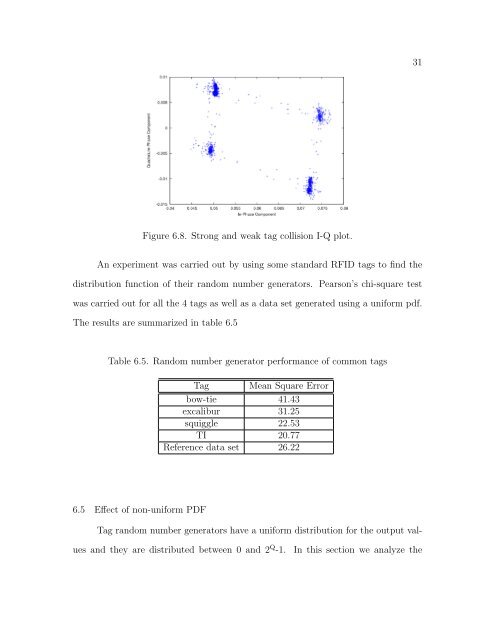utilizing physical layer information to improve rfid tag
utilizing physical layer information to improve rfid tag
utilizing physical layer information to improve rfid tag
You also want an ePaper? Increase the reach of your titles
YUMPU automatically turns print PDFs into web optimized ePapers that Google loves.
Figure 6.8. Strong and weak <strong>tag</strong> collision I-Q plot.<br />
An experiment was carried out by using some standard RFID <strong>tag</strong>s <strong>to</strong> find the<br />
distribution function of their random number genera<strong>to</strong>rs. Pearson’s chi-square test<br />
was carried out for all the 4 <strong>tag</strong>s as well as a data set generated using a uniform pdf.<br />
The results are summarized in table 6.5<br />
Table 6.5. Random number genera<strong>to</strong>r performance of common <strong>tag</strong>s<br />
6.5 Effect of non-uniform PDF<br />
Tag Mean Square Error<br />
bow-tie 41.43<br />
excalibur 31.25<br />
squiggle 22.53<br />
TI 20.77<br />
Reference data set 26.22<br />
Tag random number genera<strong>to</strong>rs have a uniform distribution for the output val-<br />
ues and they are distributed between 0 and 2 Q -1. In this section we analyze the<br />
31
















